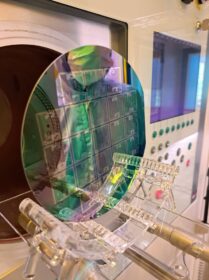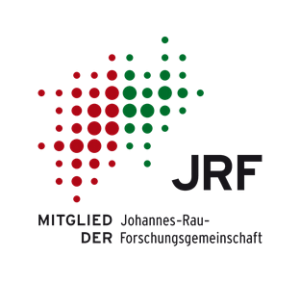Against food frauds with quantum sensor-technology
Can quantum mechanics be used to the benefit of consumers in supermarkets and restaurants? AMO GmbH and partners are setting out to demonstrate this in the BMBF-funded project “QSPEC – Quantum sensor for improved detection of authenticity and ingredients of food products”.
Food products often display proud claims regarding their ingredients – whether it is the geographic origin, the organic certification, or presence or absence of certain ingredients. A capillary check of these statements is extremely difficult, and this is why food frauds are, unfortunately, extremely common. Estimates speak of a damage of €10-50 billion per year in the EU alone – in some cases also with significant health risks.
Powerful tools against food frauds are modern authenticity test methods that do not target specific substances but check the “fingerprint” of a food product, i.e. its spectrum, against a database of reference spectra. Today, the golden standard of authenticity tests is NMR spectroscopy, which allows to identify unambiguously almost any organic substance in a given sample. But its applicability is limited by the cost of the corresponding equipment, which is in the million Euro range.
The project QSPEC aims at laying the basis for a new generation of analytical tools with a sensitivity almost comparable with NMR, but at much lower costs. “In the project, we are combining the advances of two fields,” says Dr. Stephan Suckow, leader of the Nanophotonic Group at AMO GmbH and coordinator of the QSPEC project. “On one hand, we build on the progress of the photonic chip industry to develop a compact system suitable for mass production. On the other hand, we exploit very advanced concepts from the field of quantum sensing.”
Measuring with entangled photons
Quantum mechanics plays indeed a very crucial role in the device concept targeted by QSPEC, in particular the idea of using pairs of entangled photons. Suckow says: “We use a process which – if you excuse the expression – is totally freaky. We create a pair of entangled photons and use one of them to interact with the food sample, and the other one to get information on what’s inside.”
This is possible because when two photons are entangled, any interaction on one of the two simultaneously affects also the other one, even when they are physically separated. This “spooky effect” is one of the most fascinating and counterintuitive aspects of quantum mechanics, and one of the key aspects exploited in the project QSPEC.
The other crucial point is that the entangled photon pair is created by a so-called quantum frequency comb, which produces photons of two different frequencies. One of the photons is in the so-called molecular fingerprint region in the mid infra-red spectrum, and therefore particularly suitable for interacting with the sample, and the other one is in the near infra-red range, and therefore especially easy to detect. Exploiting these effects, the QSPEC team expects to achieve a spectral resolution that is at least 50 times higher than today’s best optical spectrometers, at a sensitivity beyond the classical noise limit. “This performance will allow to take ‘fingerprints’ of food samples, similarly to what is done today in the most advanced NMR laboratories, but with a technology that could be employed on large scale at much lower costs,” says Suckow.
A lighthouse project
The project is funded by the German Federal Ministry of Education and Research (BMBF) through the funding scheme “Lighthouse projects in quantum-based measurement technology to address societal challenges”, and it brings together major experts in quantum-sensor technology, nanophotonics as well as laser and measurement technology and food-quality assessment. Together with AMO – which is responsible for the development of the integrated nanophotonic chip – the QSPEC consortium counts the Institute for Photonics at the Leibniz University Hannover, TOPTICA Photonics, the Laser Center Hannover e.V., AMOtronics and the German Institute of Food Technologies.






